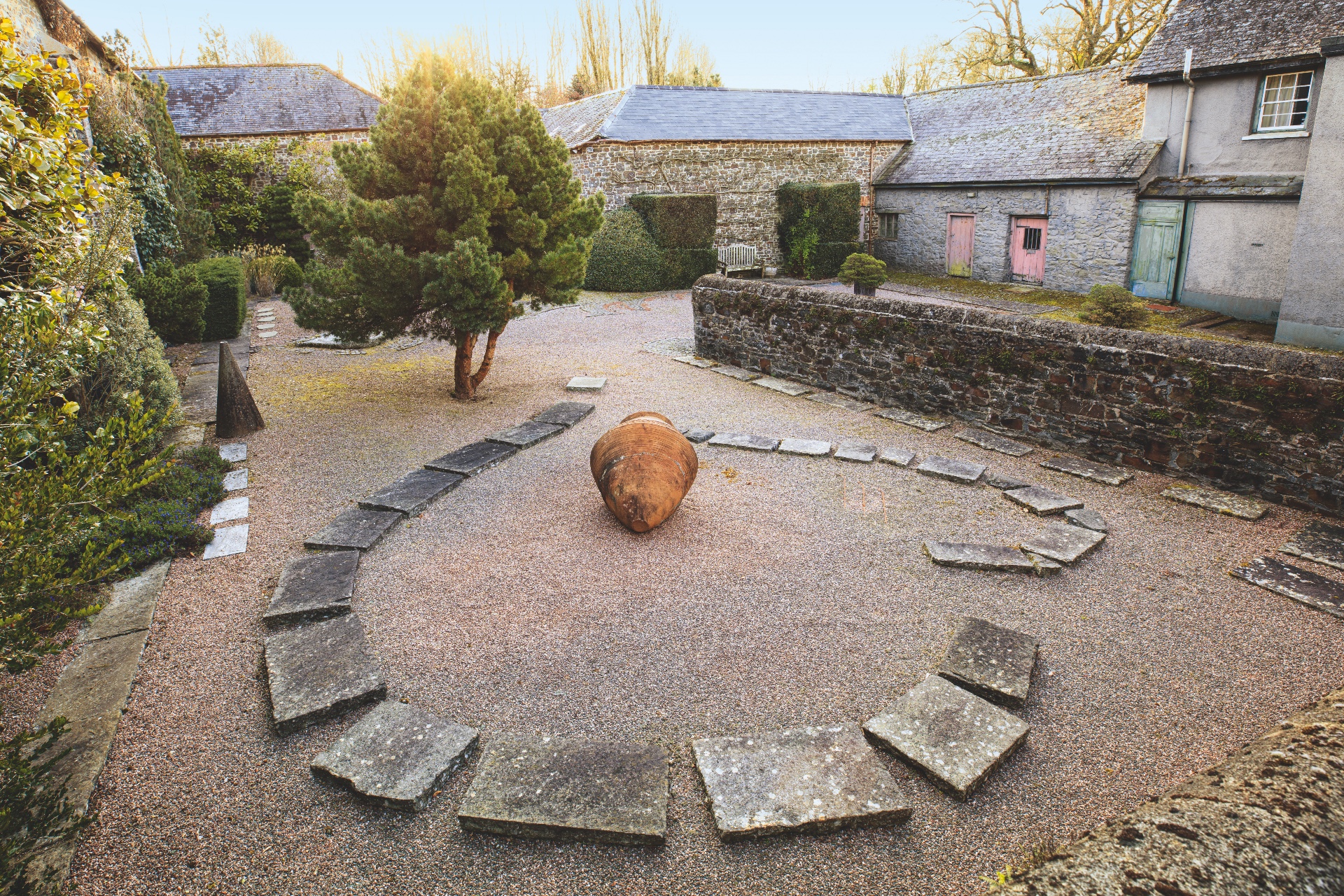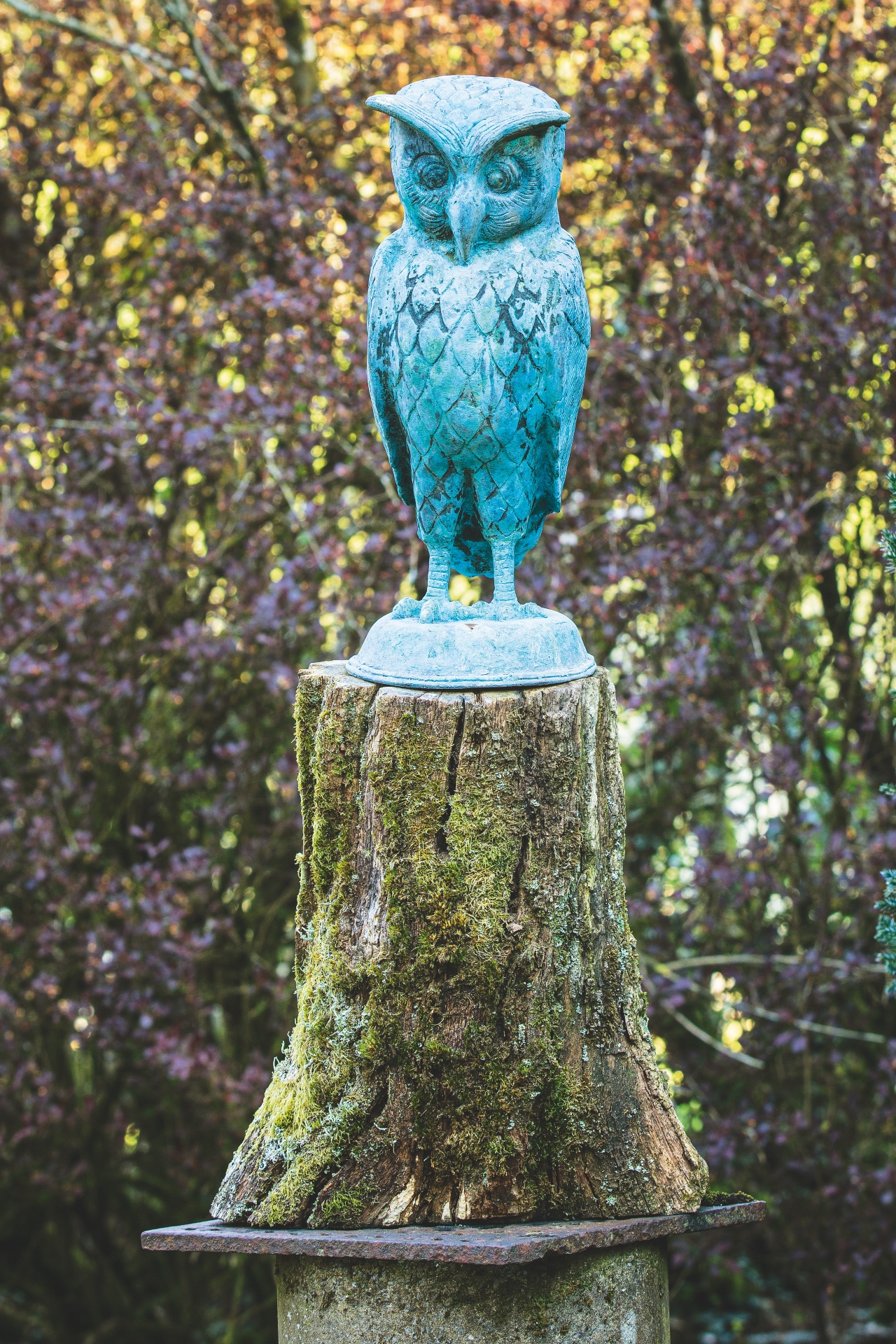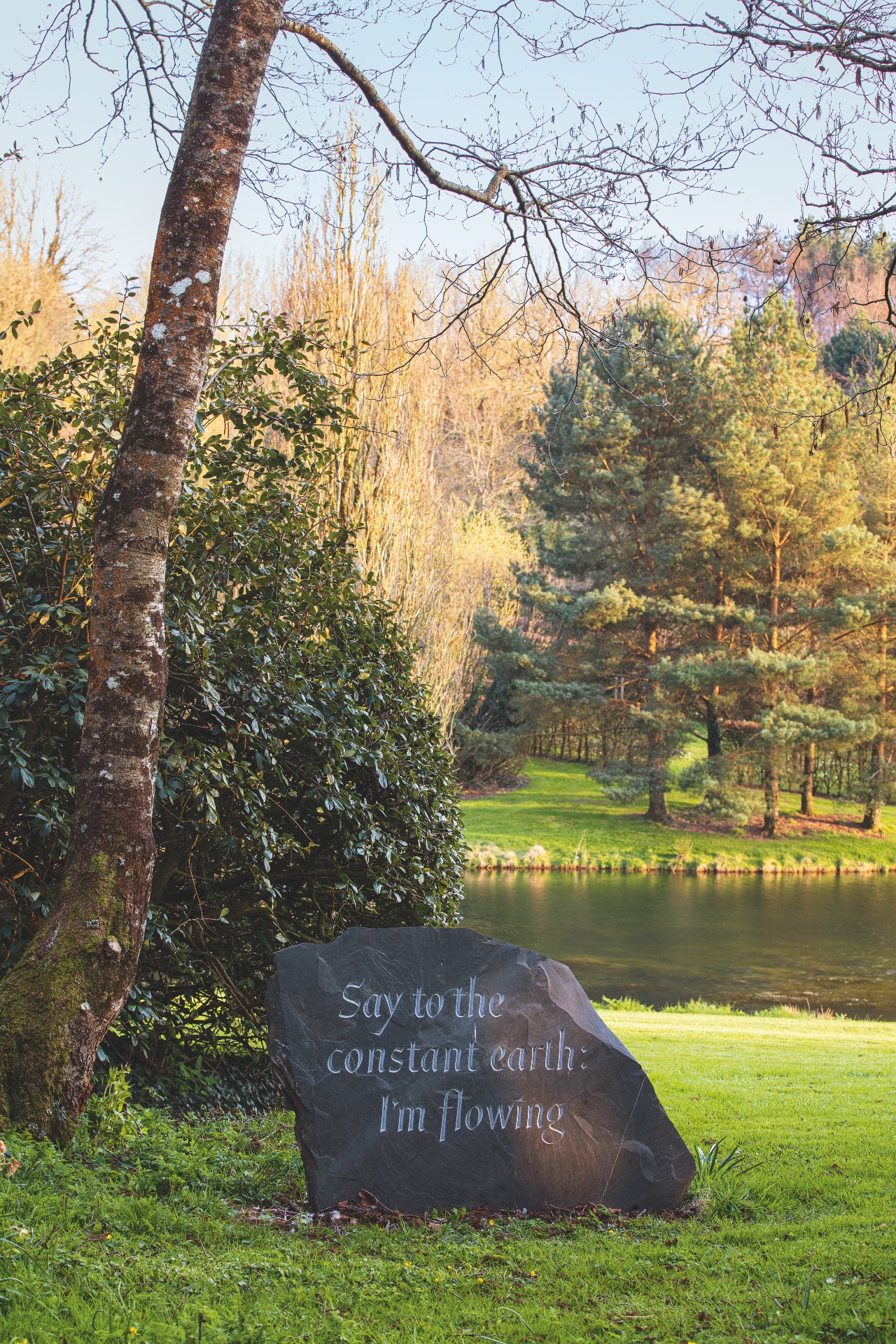Plaz Metaxu Garden: The 'place of thresholds, gaps and surprise transitions’
Developed over 30 years by an art historian, this thought-provoking garden is filled with Classical references, reveals Noel Kingsbury.

The farmland rolls up and down, interrupted by hedges and trees. There is a small lake and a haze of reeds showing where the valley bottom is damper. It all looks typically Devonian. Yet a closer examination reveals oddities: a cluster of narrow slate pillars, figures on the ground made by cobbles, clipped hedges that enclose irregular spaces. Welcome to Plaz Metaxu, the life’s work of art historian Alasdair Forbes, who moved here in 1992.
Until now, there were two recently made gardens of note that could be described as ‘gardens of the mind’, in that their physical structures, planting and modifications of the landscape are all subordinated to a conceptual, rather than merely horticultural or aesthetic idea: Ian Hamilton Finlay’s Little Sparta in the Pentland Hills near Edinburgh and Charles Jencks’s The Garden of Cosmic Speculation at Portrack House, Dumfriesshire.
Plaz Metaxu deserves to join them, although it is as different from them as they are from each other.

All are, to a large part, mysterious and lack accompanying explanation, but of the three it is Plaz Metaxu that is certainly the most visually pleasing, the most harmonious and therefore, perhaps, the most accessible to the uninitiated. Its scale helps, as none of the interventions in the landscape crowds in, nothing dominates. Instead, all its components are subsumed in a mellow green whole.
To begin to understand Plaz Metaxu, it helps to bear in mind that each part of the garden is named after a Classical deity. Each deity acts as a muse for the garden’s creator, as well as providing us with a clue to its meaning. From this basis, Mr Forbes spins out a web of allusions and connections, drawn from a lifetime's study. ‘I wanted the garden to be as inclusive as possible of all the cultural stimuli I have tried to absorb,’ he says.

Fortunately, he explains this philosophical background in his recently published book, On Psyche's Lawn—The Gardens at Plaz Metaxu and (pre-Covid) he accompanied interested visitors around the garden, inevitably leading to discussions that encompassed history, philosophy, psychology, poetry and religion.
Plaz Metaxu, which is Greek for ‘the place between’', is situated between two hill sides and this emphasis on transition and uncertainty—‘the gap between the immediate and the idea’— underpins everything. This is a garden of ‘thresholds, and gaps and surprise transitions’.
Exquisite houses, the beauty of Nature, and how to get the most from your life, straight to your inbox.
There is an old kitchen garden, cob-walled, that rises above the house and is relatively conventionally planted with shrubs and perennials. Then, between the house and some old farm outbuildings, lies a courtyard area where the dominance of gravel and hard surfaces may remind some of Japanese dry gardens. This is dedicated to Hermes, messenger of the gods, who leads the souls of the dead to the Underworld.
Here is the first of many allusions the garden makes to the darker side of life. Too many gardens, Mr Forbes believes, are ‘seamless, re-creational attempts to create Paradise’, lacking any reference to our troubled exile. ‘Gethsemane, as well as Eden, was a garden.’

Plaz Metaxu proceeds westwards along the valley bottom, with the 32 acres of former farmland reaching up on each side creating a backdrop dominated by the green of grass, trees, hedging and the occasional herbaceous planting. The visitor can stroll around, from light to shade and back again, into and out of hedged enclosures of varying sizes.
They are confronted by occasional dead ends, arrive without warning at standing stones and come upon inscriptions, urns and abstract sculptures. There is no obvious route. Although the valley bottom forms an axis and a mental backbone to this exploration, it does not lead anywhere.

‘I tend to imagine the layout of a garden not only in terms of routes and sequences or the balance between open and closed spaces,’ says Mr Forbes, ‘but as a distribution of spatial and psychological weights.’
Thus, the Hermes courtyard by the house is balanced by Hades, a powerfully hedged enclosure near the lake. He also talks about garden elements ‘rhyming’: the hedges of Hades, for example, are echoed in the arrangement of the paving slabs in the courtyard. In this way he brings harmony to our wanderings.
Plaz Metaxu is—as much as any garden ever is—at last complete. Cedalion, a shoulder of land near the entrance with views over the whole garden, has been one of the last areas to receive attention. Named after the youth who stands on the shoulders of Orion in Poussin’s painting Blind Orion Searching for the Rising Sun(1658), the area has an autumnal focus.

Trees are selected for autumn colour and accompanied by late-flowering perennials and grasses. The saffron-coloured cloak worn by Cedalion (a colour often linked to enlightenment and salvation) drives much of the plant selection. All is beautifully considered, as Cedalion provides a relatively high vantage point in a garden where there are few such, and more flowering colour than elsewhere, creating a fitting crescendo and the sense of a journey ending.
Plaz Metaxu has involved, and continues to involve, much physical work. Mr Forbes has been extraordinarily lucky in having had a local man, Cyril Harris, who has worked with him since his arrival. Mr Harris—accompanied, at times, by his sons—has been wonderfully ingenious in giving form to Mr Forbes’s abstract ideas. Many of our greatest gardens are the result of such partnerships although, too often, those who did the physical labour are lost to history.
This garden owner's generosity of spirit, however, ensures that visitors are always told who helped to build it.

Ideas behind designs
How do we convey meaning in gardens? A good example from Plaz Metaxu is the New Paragraph sign at the head of a path where it turns sharply, clearly signifying a break or transition. Materials need to be robust and long-lasting. Alasdair Forbes’s use of cobbles to delineate marks on sloping turf has the added advantage of not interfering with mowing. Symbols made with cobbles are often difficult to decipher close up, but are legible when viewed from an opposite slope or lower level ground.
Plaz Metaxu makes great use of single standing stones and other similar objects. These act as powerful focal points, as well as subliminally encouraging the onlooker to stop and reflect. They can be particularly effective seen through a gap in a hedge or similar narrow opening. Such negative spaces are an important tool in the kit of any garden-maker wanting the onlooker to focus, be aware and observe.